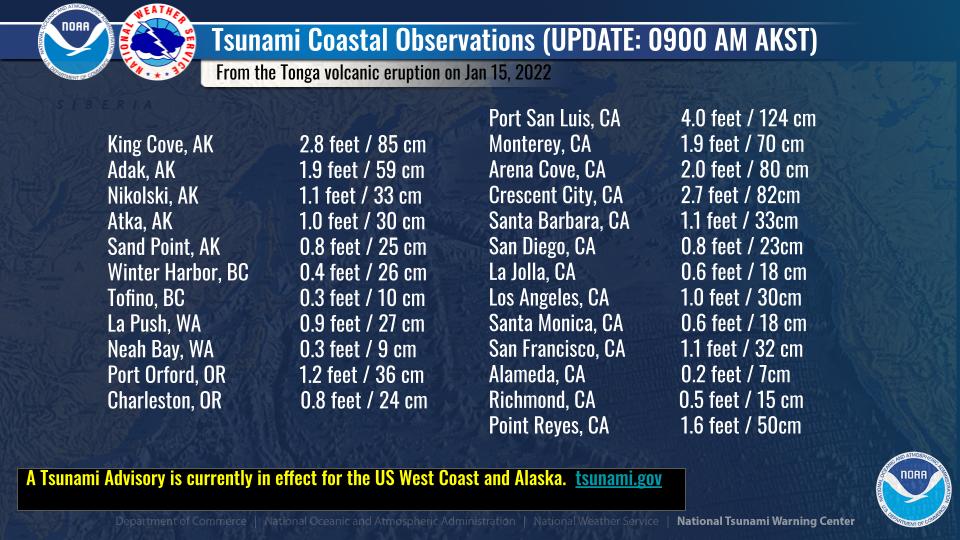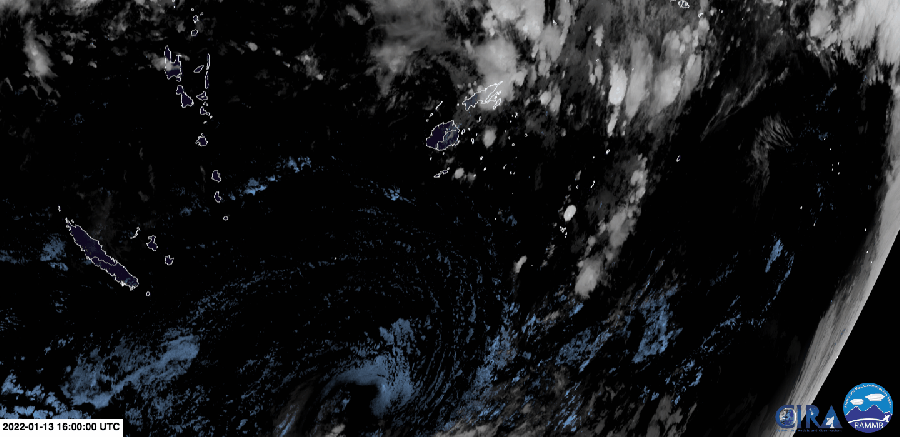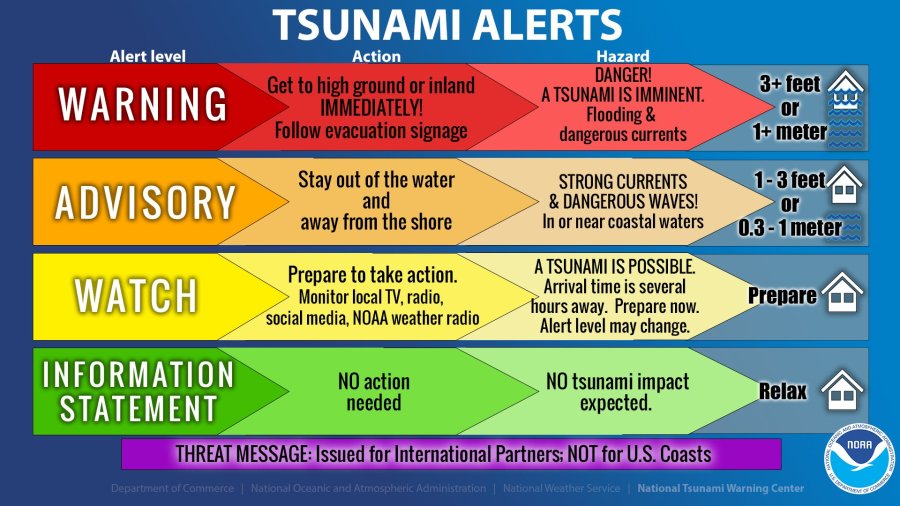PORTLAND, Ore. (KOIN) — A tsunami advisory was issued Saturday morning for the entire U.S. West Coast and parts of British Columbia after an underwater volcano erupted around 8:30 p.m. Friday near Tonga in the South Pacific.
The advisory for Oregon and Washington ended at 5 p.m., officials said.
Waves measuring one to three feet hit along the Washington and Oregon Coast as early as 7:55 a.m. in Port Orford in southern Oregon. Officials told people at the coast to avoid the water, shore, harbors and marinas.
The overall event could last about 24 hours, according to Oregon’s Office of Emergency Management.
The National Weather Service in Portland said the first waves hit Newport in Oregon by 8:30 a.m., Long Beach in Washington by 8:35 a.m. and Seaside in Oregon by 8:45 a.m.
At 11:45 a.m., NWS Portland said on Twitter the largest waves had seemingly spared much of the Oregon Coast although it remained unclear if bigger waves were on the way.
“People should be prepared for waves to exceed 1 (foot),” officials said in the Tweet.
Caution urged
Officials urged caution as tsunamis often come as a series of waves, and the highest waves may not be in the initial arrival. According to a special weather statement issued by NWS Portland at 7:34 a.m., tsunami waves from one to 2.5 feet tall were seen in Hawaii for more than three hours after the first wave. Read the full statement here.
“Stay away from port harbors and low-lying beaches because those strong currents can still cause a lot of damage, and you could be potentially risking your life,” Althea Rizzo, the geologic hazards coordinator at the OEM, said.

According to data released from NWS around 10 a.m., the largest waves seen on the West Coast have been in Port San Luis, Calif., at 4 feet and in King Cove, Alaska, at 2.8 feet. Officials said the waves along the coast have generally been around 1 foot or less in height.
NWS Portland said it’s unclear if any bigger waves will impact the Oregon and Washington coast, but it’s better to assume they will until further data is released.

The volcano, Hunga Tonga-Hunga Ha’apai, erupted Friday evening beneath the ocean’s surface and sent ash, steam and gas more than 10 miles into the sky, officials from the National Oceanic and Atmospheric Administration said.
The eruption was heard almost 6,000 miles away in Anchorage and Fairbanks, NWS Alaska said Saturday. Infrasound measurements from the Alaska Volcano Observatory confirmed multiple reports on social media of people hearing the eruption between 3:30 and 4 a.m. AKST, officials said.
“The fact that it wasn’t heard closer to the event (e.g., Hawaii) suggests there was an atmospheric component that caused a local/regional bouncing of the sound waves off some portion of the atmosphere,” NWS officials wrote on Twitter. “Just speculation. People will be researching this event for many years.”

Satellite imagery showed the 161-mile radius of the eruption from space. An infrared camera captured the extent of the ash plume following the eruption Friday in the South Pacific.
The NWS Tsunami Warning System issues a tsunami advisory when a tsunami with the potential to generate strong currents or waves dangerous to those in or very near the water is imminent, expected or occurring.
According to the NWS TWS website, significant inundation is not expected for areas under an advisory, however, a threat posed by the tsunami may remain for several hours.

See all the latest weather alerts on KOIN 6 here. Read more about tsunami warnings and safety here.
KOIN 6 will update this story with more information throughout the day.